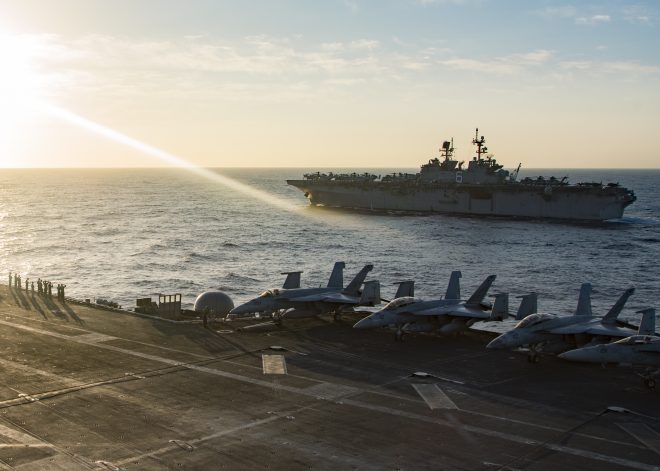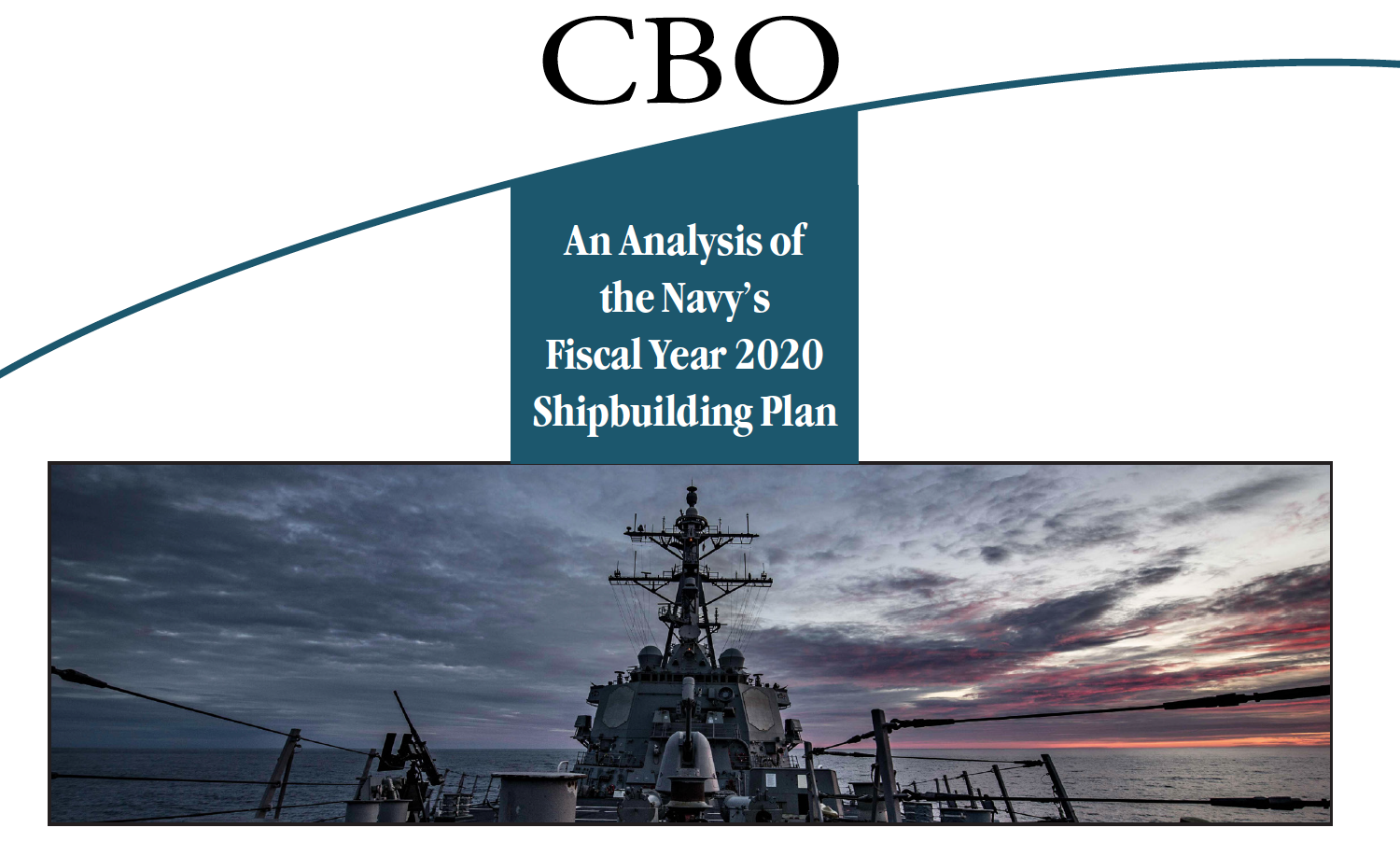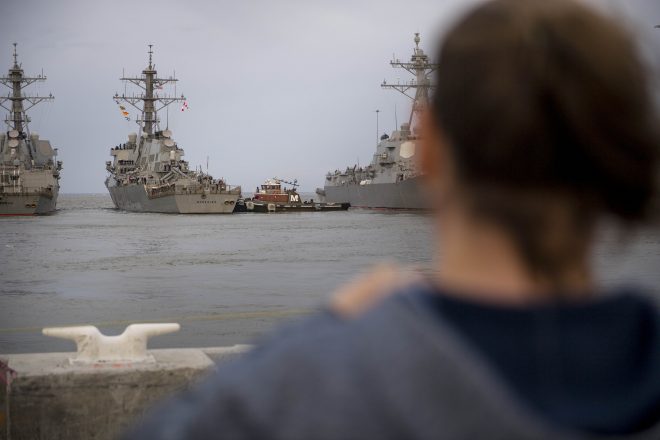"Sen. McCain Slams $2.5B Carrier Cost Increase; Navy Struggles To Fund SSBN-X, Destroyers"
By Sydney J. Freedberg Jr. on May 08, 2013 at 1:22 PM
Source:
http://breakingdefense.com/2013/05/08/sen-mccain-slams-2-5b-carrier-cost-increase-navy-struggles-to-fund-ssbn-x-destroyers/
By Sydney J. Freedberg Jr. on May 08, 2013 at 1:22 PM
Source:
http://breakingdefense.com/2013/05/08/sen-mccain-slams-2-5b-carrier-cost-increase-navy-struggles-to-fund-ssbn-x-destroyers/
CAPITOL HILL: It’s been a rough 48 hours for the US Navy. Yesterday, the Littoral Combat Ship was battered by House appropriators and questioned by a leaked report. Today it was the Senate Armed Service seapower subcommittee’s turn to grill the Navy about its aircraft carrier and submarine programs. While the automatic 10-year budget cuts known as sequestration played a major role in the budget hearing — as always these days — what was particularly striking was how much long-term trouble the Navy’s shipbuilding plan is in even if the sequester does go away.
“We have a $2.5 billion cost overrun on an aircraft carrier,” fumed the inimitable Sen. John McCain. The Navy’s next-generation nuclear carrier, the CVN-78 Gerald R. Ford under construction at Huntingon-Ingalls’ Newport News shipyard in Virginia, is now estimated to cost almost $13 billion. “Newport News is the only game in town, nobody else builds aircraft carriers,” a visibly irate McCain continued, so how do you force them to cut costs when there’s no competition? “What can we do, what can we do, to prevent this kind of cost overrun which… is unacceptable when we have a terribly damaged economy?” he said.
“The cost growth on the CVN-78 is unacceptable,” agreed the Navy’s Assistant Secretary for procurement, Sean Stackley. “Far too much risk was carried over into the design of the Ford class,” he said, and the Navy’s working to make construction more efficient on both the Ford and the follow-on carrier, CVN-79 John F. Kennedy.
“I don’t think some of us would have voted for it if we had known” how high the costs would rise, McCain grumbled.
Such cost overruns are a self-inflicted wound entirely separate from the sequester. But it’s not as if sequester doesn’t make everything worse. Stackley said the automatic cuts took $1.7 billion out of the 2013 shipbuilding budget but the Navy was able to buffer the impact by using unexpended funds from past years and delaying some items to future years; if sequester continues into 2014, he said, “we have pulled all of the margin out” and there’ll be no cushion left.
Already, the Navy is stretching painfully to cut a contract for a bulk buy of 10 DDG-51 Arleigh Burke destroyers instead of nine: Congress provided adequate money, but sequester wiped out $560 million of that. Even after reshuffling funds among accounts, said Stackley, “for that tenth destroyer, we’re about $300 million short.”
Sequestration is also already hitting the federal workforce, including the government shipyards that do most of the fleet’s regular repair work. Hiring and overtime freezes are tightening already overloaded schedules. Repairs will be delayed if the shipyard workers are included in what is expected to be a Defense Department-wide furlough of federal civilians, although Stackley said the Navy hoped to get them an exemption.
Beyond these 2013 and 2014 problems, however – even beyond the 10-year valley of death that is the sequestration – the Navy has a serious shortfall entirely independent of sequestration. The big problem is that the SSBN(X), the replacement for the current Ohio-class nuclear missile submarines, is staggeringly expensive.
The Navy has brought the cost estimate down from $7 billion for each SSBN(X) to $5.6 billion — and even has a goal of $4.9 billion — but “that by itself does not bring the shipbuilding plan within the reach of affordability,” Stackley told the committee. “You have to go back to the period of the eighties when we were building the 600 ship Navy to see those budget levels…. That is beyond our shipbuilding TOA [total obligation authority] by any method of extrapolation.”
To fit SSBN(X) in the budget the Navy either needs nearly $20 billion a year for new ships – almost twice the current figure – or must cut back every other program. That’s the kind of thing the Navy is supposed to address in its 30-year shipbuilding plan, but as McCain snarled today and as House Seapower chairman Randy Forbes protested earlier, the Pentagon is late getting its homework to Congress. Stackley said he hopes to “hand deliver” it to the Hill next week.
SSBN(X) is the 30-year-plan’s biggest problem, but it’s hardly the only one, not even with submarines. The Navy’s attack submarine fleet will shrink below the 48 boats commanders say they require because old Los Angles-class subs and Ohio-derived SSGN guided-missile subs are retiring faster than the new Virginia class can replace them. What’s more, a planned “Virginia Payload Module” to increase the Virginias’ arsenal of non-nuclear missiles (thus making up for the loss of the SSGNs) will add an estimated $360 million to $380 million per sub, additional expenses that Stackley acknowledged are “not included” in the 30-year plan.
No wonder, then, that Stackley fended off a push from Mississippi Sen. Roger Wicker for the fleet to buy an additional San Antonio-class amphibious warfare vessel from his home-state shipyard, Huntington-Ingalls’s namesake Ingalls, Miss. Facility. Adding a 12th San Antonio – in Navy shorthand called an LPD-17 – to the planned production run would go beyond the Navy’s requirement for 11, Stackley said, and while the Navy will next turn to replacing its LSD-type amphibious ships, those are smaller and less expensive vessels.
“The LPD-17 is more ship than the ship that we need,” said Stackley. “We’ve got to get that ship’s cost [down] into the box associated with the LXR,” the Navy name for the LSD replacement. Huntington-Ingalls has, however, proposed a lower-cost variant of the San Antonio design it’s calling LPD Flight II.
Amidst all this incoming fire, the controversial Littoral Combat Ship did not quite sail through unscathed, although it avoided the heavy fire attracted by larger vessels. “We need to fix it or find something else,” said McCain, saying the LCS had not yet “demonstrated adequate performance” and that “I read the Navy’s own analysts have about 10 percent confidence in the estimate to operate and support.” (That’s a story we broke here yesterday).
The LCS is under budget for now, Stackley replied, “but sequestration pulled the margins out of those budgets” too. As for the crucial “modules” that arm the ship for specific missions, the first two of those – the mine-clearing module and the full version of the anti-small-boat module of which a partial version is now in Singapore – will probably be delayed by the sequester into 2015, he added.



